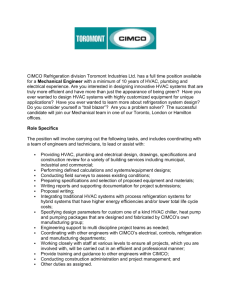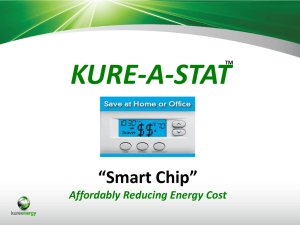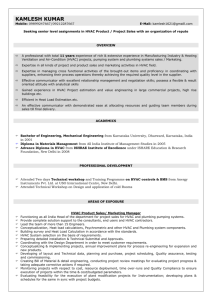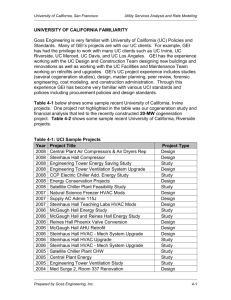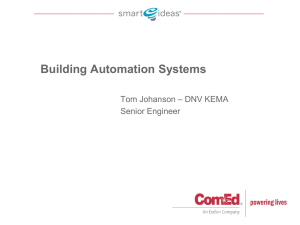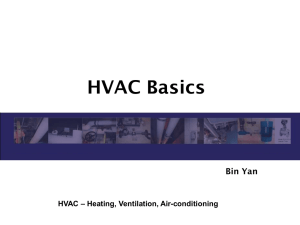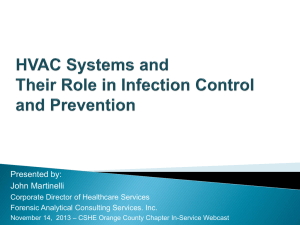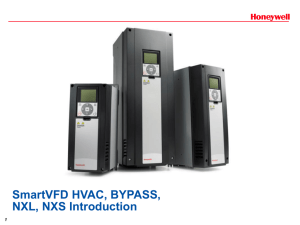Objectives
advertisement
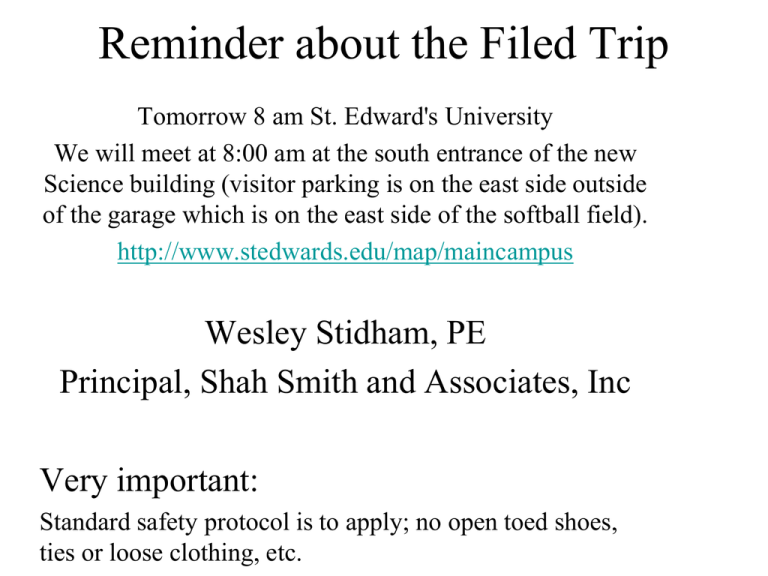
Reminder about the Filed Trip Tomorrow 8 am St. Edward's University We will meet at 8:00 am at the south entrance of the new Science building (visitor parking is on the east side outside of the garage which is on the east side of the softball field). http://www.stedwards.edu/map/maincampus Wesley Stidham, PE Principal, Shah Smith and Associates, Inc Very important: Standard safety protocol is to apply; no open toed shoes, ties or loose clothing, etc. Extra office hours Questions related to the final project Tomorrow my office scheduling at: • http://doodle.com/aksyssfr58yk58xy Course project presentation • Monday, May 5th 9:30 am, same classroom • Timing: 6 minutes • Approximately 1 PowerPoint Slides per minute For example • • • • Specify the project (1slide) Provide some basic floor layout and input variable assumptions Results (form calculation and manufacturer catalogs) Disuses you system challenges and modifications related to your design solutions • 2-3 minutes for Question and Answers • I will need you power point before the class • You can email it to me. Class Objectives 10 minutes presentation about HVAC and Building Acoustics Continue about the Economizer and Heat recovery Discuss hydronic system and advance HVAC systems Summarize the course - course evaluation Pumps and Plumbing • Very similar to fans and ducts • Same principles based on fluid dynamics • With some specifics Pumps • Driving force to move air water in buildings • Raise pressure and produce flow • One main type • Centrifugal Pump curves Plumbing system design Head loss Economizer Fresh air volume flow rate control Controlled device is damper damper fresh air - Damper for the air - Valve for CC mixing recirc. air T & RH sensors Economizer % fresh air Fresh air volume flow rate control enthalpy damper Fresh (outdoor) air TOA (hOA) mixing Recirc. air T & RH sensors 100% Minimum for ventilation Economizer – cooling regime Example of SEQUENCE OF OERATIONS: If TOA < Tset-point open the fresh air damper the maximum position Then, if Tindoor air < Tset-point start closing the cooling coil valve If cooling coil valve is closed and T indoor air < Tset-point start closing the damper till you get T indoor air = T set-point Other variations are possible Heat recovery Heat recovery Desiccant wheel Residential vs. Commercial systems • Course focus was on HVAC equipment that is used in both: residential and commercial systems • Emphasize on the application in commercial systems Commercial HVAC Systems Multi zone Single zone CAV With and without humidity control VAV VAV With and Dual without duct reheaters This is not the complete list ! CAV Dual With reheaters duct DOAS with fan coils or radiant ceilings All Hydroinic that relay on infiltration DOAS with fan coils Course overview Topics: 1. Background, Introduction and Review 2. Heating and Cooling Loads 3. Psychrometrics and mass transfer 4. Air conditioning and refrigerant cycles 5. Chillers and Boilers 6. Coils and heat exchangers 7. Ducts, air, and water systems 8. Large HVAC Systems 9. HVAC Control 10.Final Project, field trip 2 wks 1 wk 1 wk 2 wks 1 wk 2 wks 2 wks 2 wk 2 wk 1 wk Course objectives • • • • • Apply fundamental physical principles to HVAC design Describe and size each component in an HVAC system Design HVAC systems based on manufacturer’s datasheets Contrast residential systems with commercial systems and use appropriate design techniques for each type of system Solve HVAC design problems with high-quality references




